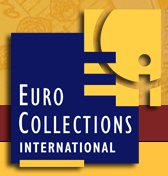
Germany 2009 10€ 400th Anniv. Keplers Planetary Motion Law Silver Proof
Johannes Kepler (1571-1630) was a German astronomer, astrologer and mathematician, known as one of the key figures in the 17th century scientific revolution along with Newton and Galileo. Kepler is best known for this laws on planetary motion and it is the first two of these laws that were published 400 years ago in his book, Astronomia nova (A New Astronomy). The following information on the Astronomia nova comes from Wikipedia:
Kepler calculated and recalculated various approximations of Mars' orbit using an equant (the mathematical tool that Copernicus had eliminated with his system), eventually creating a model that generally agreed with Tycho's observations to within two arcminutes (the average measurement error). But he was not satisfied with the complex and still slightly inaccurate result; at certain points the model differed from the data by up to eight arcminutes. The wide array of traditional mathematical astronomy methods having failed him, Kepler set about trying to fit an ovoid orbit to the data.
Within Kepler's religious view of the cosmos, the Sun (a symbol of God the Father) was the source of motive force in the solar system. As a physical basis, Kepler drew by analogy on William Gilbert's theory of the magnetic soul of the Earth from De Magnete (1600) and on his own work on optics. Kepler supposed that the motive power (or motive species) radiated by the Sun weakens with distance, causing faster or slower motion as planets move closer or farther from it. Perhaps this assumption entailed a mathematical relationship that would restore astronomical order. Based on measurements of the aphelion and perihelion of the Earth and Mars, he created a formula in which a planet's rate of motion is inversely proportional to its distance from the Sun. Verifying this relationship throughout the orbital cycle, however, required very extensive calculation; to simplify this task, by late 1602 Kepler reformulated the proportion in terms of geometry: planets sweep out equal areas in equal times—the second law of planetary motion.
He then set about calculating the entire orbit of Mars, using the geometrical rate law and assuming an egg-shaped ovoid orbit. After approximately 40 failed attempts, in early 1605 he at last hit upon the idea of an ellipse, which he had previously assumed to be too simple a solution for earlier astronomers to have overlooked. Finding that an elliptical orbit fit the Mars data, he immediately concluded that all planets move in ellipses, with the sun at one focus—the first law of planetary motion. Because he employed no calculating assistants, however, he did not extend the mathematical analysis beyond Mars. By the end of the year, he completed the manuscript for Astronomia nova, though it would not be published until 1609 due to legal disputes over the use of Tycho's observations, the property of his heirs.
The 10 euro silver coin issued to collectors as a commemoration of the Astronomia nova is struck in both proof and brilliant uncirculated quality, with the same design featured on both types of release.
The reverse design features a partial profile portrait of Johannes Kepler, while to the left is an image of the geometric coordinate system used to calculate the three laws of planetary motion mathematically. Below is the inscription for the 400 years of Kepler's Law. The obverse features at top the State Emblem for the Republic of Germany, the Eagle - shows in stylised to complement the reverse image. Below that are the 12 stars signifying the European Union, as well as the inscription for the Federal Bank of Germany, the face value of 10 euros and the year of issue (2009).
Both the proof and BU coins are struck from 18 grams of 92.5% silver on a 32.50mm flan at the Stuttgart Mint (as such the obverse carries the 'F' mintmark to the right of the Eagle design). The design of the coin was crafted by Ulrich Böhme and a maximum mintage of 200,000 proof coins and 1.5 million BU coins has been set. The proof coin is supplied in a capsule, while the BU is in a protective plastic flip.
Euro Collections International has both the Proof and Brilliant Uncirculated quality issues available to order now.





No comments:
Post a Comment